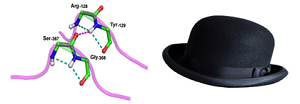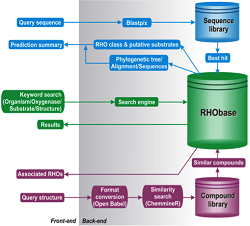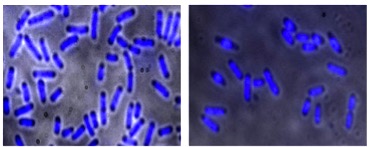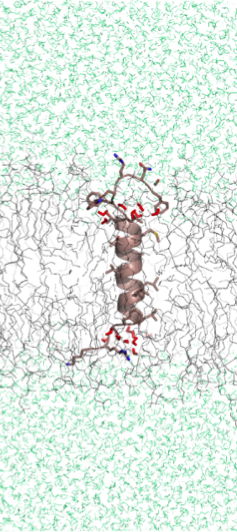Computational Biology

A new protein secondary structure, Topi (Scientific Reports, 6:31483 (2016))

A database for ring-hydroxylating oxygenases (Environ. Microbiol. Rep. 6, 519 (2014))
This institutional project focuses on understanding biological processes using computational approaches, often complemented by experimental methods. The research groups from various departments and centers of the institute participate in this program as a team with interdisciplinary expertise to pursue the research in topics such as:
• Structural bioinformatics (delineation of sequence and structural patterns from analysis of protein structures, understanding physicochemical features and electrostatic control in molecular recognition and structural changes that take place on protein-protein/DNA complex formation, homology modelling of proteins such as enteric pilins, docking and modelling of protein-protein complexes).
• Developing mechanistic insight into the molecular biology from structural dynamics, integrating therapeutic molecular design (dynamics of proteins, lipid, ligand binding and insertion of helix into lipid bilayers, deciphering the effect of introducing Aib residues in designed helical inhibitor of hdm2-p53 interaction, dynamics of the anticodon loop in tRNAGln).
• Regulatory RNAs and their role in stem cell biology (investigating the role of long and small noncoding RNAs in stem cells and exploring the intricate cross-talk among competitive endogenous RNAs).
• Evolutionary bioinformatics (understanding different evolutionary forces and gene regulatory mechanisms by comparative and functional genomic analysis in all three domains of life).
• Molecular basis for degradation of xenobiotic compounds.
• Development of web servers, such as ProFace, PluriPred, RHObase, mirTPred, LncRBase, piRNAQuest, PPIMpred and LMDIPred etc.
• Identifying biomarkers and network of regulators for neurodegenerative diseases and asthma.
In addition to basic research, the program has a clear translational objective, with a primary focus on diseases, such as cancer and asthma, with aims to discover diagnostic biomarkers as well to design lead compounds to develop novel drugs to combat the disease.
• Structural bioinformatics (delineation of sequence and structural patterns from analysis of protein structures, understanding physicochemical features and electrostatic control in molecular recognition and structural changes that take place on protein-protein/DNA complex formation, homology modelling of proteins such as enteric pilins, docking and modelling of protein-protein complexes).
• Developing mechanistic insight into the molecular biology from structural dynamics, integrating therapeutic molecular design (dynamics of proteins, lipid, ligand binding and insertion of helix into lipid bilayers, deciphering the effect of introducing Aib residues in designed helical inhibitor of hdm2-p53 interaction, dynamics of the anticodon loop in tRNAGln).
• Regulatory RNAs and their role in stem cell biology (investigating the role of long and small noncoding RNAs in stem cells and exploring the intricate cross-talk among competitive endogenous RNAs).
• Evolutionary bioinformatics (understanding different evolutionary forces and gene regulatory mechanisms by comparative and functional genomic analysis in all three domains of life).
• Molecular basis for degradation of xenobiotic compounds.
• Development of web servers, such as ProFace, PluriPred, RHObase, mirTPred, LncRBase, piRNAQuest, PPIMpred and LMDIPred etc.
• Identifying biomarkers and network of regulators for neurodegenerative diseases and asthma.
In addition to basic research, the program has a clear translational objective, with a primary focus on diseases, such as cancer and asthma, with aims to discover diagnostic biomarkers as well to design lead compounds to develop novel drugs to combat the disease.
Faculty members associated with this programme:

Antibacterial effect of silver nanoparticles and the modeling of bacterial growth kinetics (Biochim. Biohpys. Acta, 1850 (2015))

Molecular dynamics simulation of peptide integrated into membrane (Phys Chem Chem Phys 18, 24095 (2016))